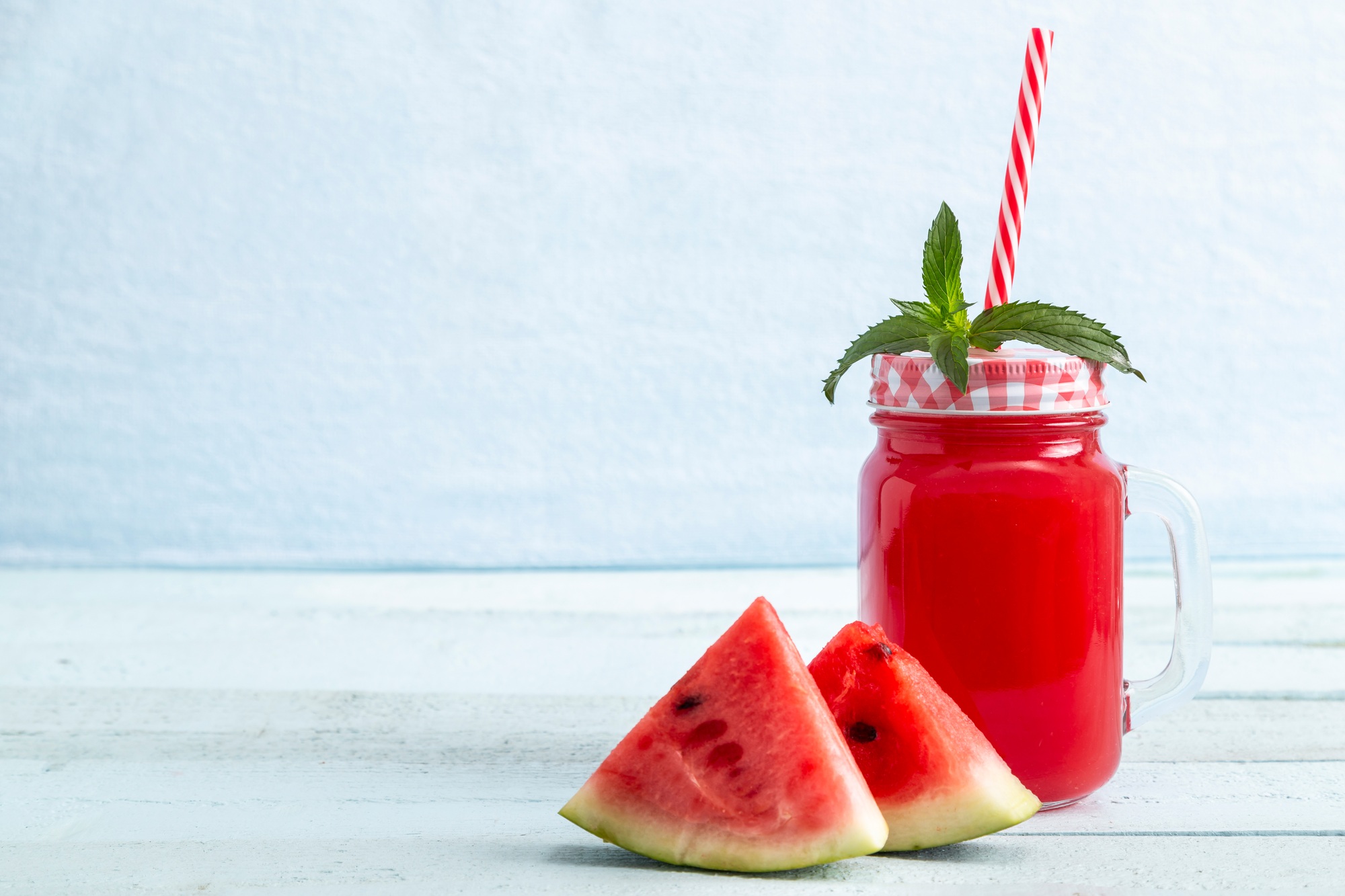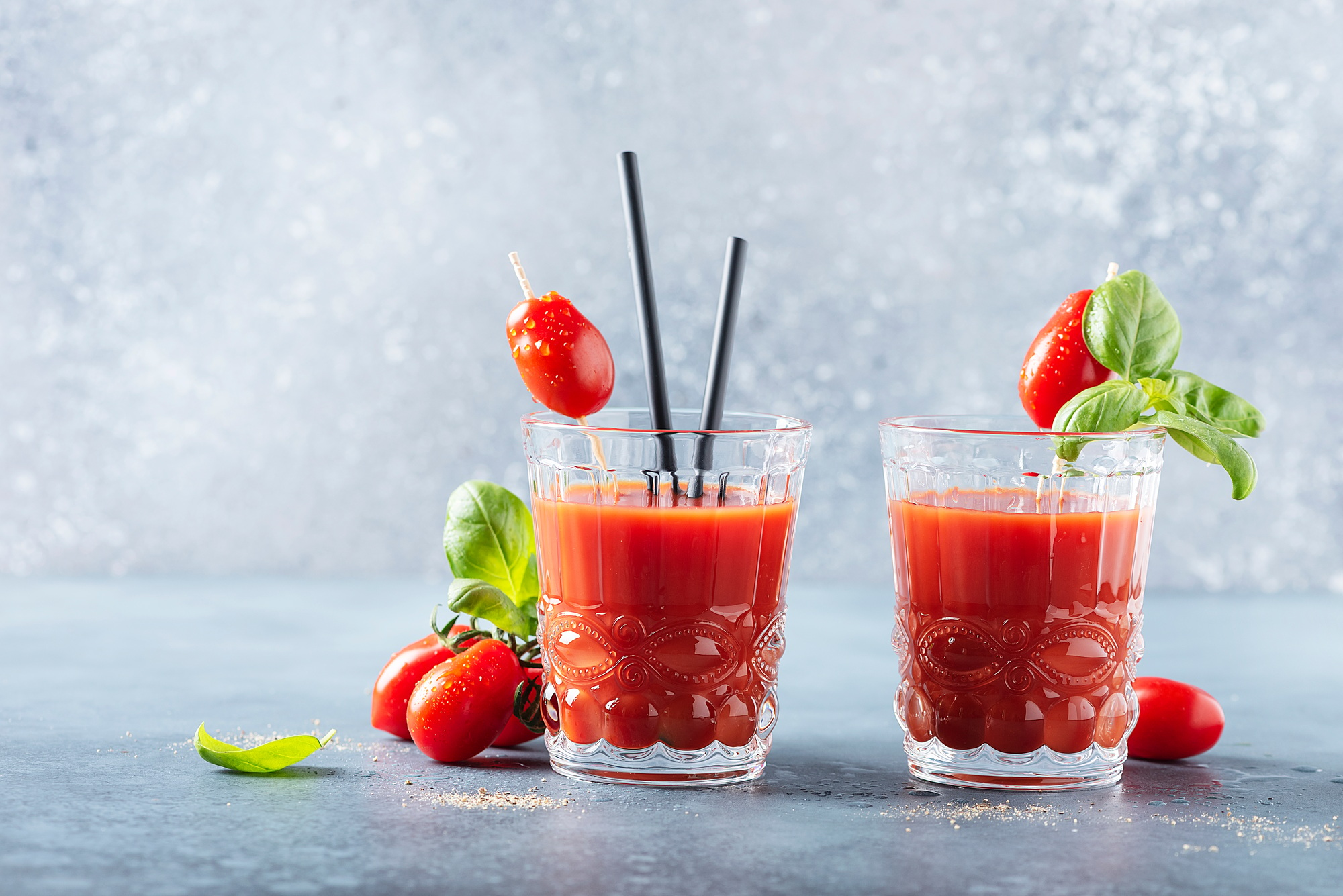Key Takeaways

- Conduct Market Research: Understanding local demand and identifying competitors helps in crafting a successful juice bar strategy tailored to your target audience.
- Choose the Right Location: Secure a high-traffic area near gyms or community centers to attract health-conscious customers effectively and maximize visibility.
- Create a Comprehensive Business Plan: Outline your mission, financial projections, and marketing strategies to set clear goals and attract potential investors.
- Design a Unique Menu: Offer a variety of juices and customizable options using high-quality ingredients to cater to different dietary preferences and enhance customer satisfaction.
- Implement Effective Marketing Strategies: Leverage social media and local partnerships to promote your juice bar, engage with the community, and attract a loyal customer base.
- Focus on Efficient Operations: Streamline daily workflow, maintain inventory, and prioritize exceptional customer service to enhance overall operational efficiency and customer experience.
Starting a juice bar can be an exciting venture that taps into the growing demand for healthy, fresh beverages. As people become more health-conscious, the appeal of vibrant juices and smoothies continues to rise. If you’re passionate about nutrition and want to share that passion with others, this could be your perfect opportunity.
You’ll need to navigate several key steps to turn your juice bar dream into reality. From selecting the right location to crafting a unique menu, every decision counts. With the right approach, you can create a thriving business that not only satisfies cravings but also promotes a healthier lifestyle. Let’s dive into the essentials of launching your very own juice bar and setting yourself up for success.
How To Start A Juice Bar

Starting a juice bar involves several essential steps that ensure a successful launch and operation.
- Conduct Market Research
Understand your target audience. Identify health and wellness trends. Analyze competitors to determine gaps in the market.
- Choose a Location
Select a high-traffic area that attracts health-conscious customers. Consider proximity to gyms, parks, or community centers for optimal visibility.
- Create a Business Plan
Outline your mission and vision for the juice bar. Include budgets, sales forecasts, and marketing strategies. Set clear financial goals that align with your small business objectives.
- Obtain Necessary Licenses and Permits
Research local regulations for health, safety, and food handling. Apply for required permits to operate your juice bar legally.
- Design Your Menu
Develop a unique menu featuring a variety of juices. Include signature blends that cater to different dietary preferences. Source fresh, high-quality ingredients for optimal taste and nutrition.
- Invest in Equipment
Purchase high-quality juicers, blenders, and refrigeration units. Prioritize equipment that enhances efficiency and maintains product freshness.
- Establish a Marketing Strategy
Utilize social media platforms to promote your juice bar. Create an engaging website. Participate in local events to build community awareness.
- Hire and Train Staff
Recruit knowledgeable staff who share a passion for nutrition. Provide training on customer service and product knowledge to enhance the customer experience.
- Launch Your Juice Bar
Organize a grand opening event to attract initial customers. Offer promotions or samples to increase foot traffic and generate buzz.
- Monitor and Adjust
Track sales and customer feedback regularly. Adapt your menu and marketing strategies to meet changing consumer preferences and improve overall operations.
Understanding The Juice Bar Business

Understanding the juice bar business involves insights into market dynamics, audience preferences, and emerging trends crucial for a small business.
Market Research
Conduct detailed market research to gauge local demand for juice products. Analyze competitors in your area to identify strengths and weaknesses. Utilize surveys and focus groups to gather data on consumer preferences, popular flavors, and pricing expectations. Establishing a clear overview of the market landscape enhances decision-making and optimizes your business strategy.
Target Audience
Identify your target audience based on demographic factors such as age, income, and health consciousness. Aim to attract health-oriented individuals, fitness enthusiasts, and busy professionals seeking convenient, nutritious options. Tailor your marketing efforts to meet their needs, highlighting the benefits of fresh, cold-pressed juices. Understanding your audience helps in creating an engaging customer experience and boosts loyalty.
Juice Bar Trends
Stay informed about current juice bar trends to keep your small business competitive. Popular trends include functional beverages featuring superfoods, plant-based options, and customizable juice blends. Analyze online trends, social media activity, and emerging wellness movements. Adapting your offerings to align with these trends invites innovation and attracts a diverse customer base.
Creating A Business Plan

Creating a comprehensive business plan serves as a foundation for your juice bar startup. This plan outlines critical aspects like your executive summary, financial projections, and marketing strategy.
Executive Summary
Develop a strong executive summary that introduces your juice bar concept. This summary includes your vision, business goals, and key market information. Write it concisely to attract potential investors and partners.
Financial Projections
Outline your financial projections with detailed estimates. Include startup costs, operating expenses, and expected revenue over the first three years. Present clear figures regarding capital requirements to ensure your small business appeals to investors looking for transparency.
Marketing Strategy
Formulate a robust marketing strategy that utilizes online and offline platforms. Focus on social media campaigns to reach health-conscious individuals. Engage with the community through events and partnerships to create awareness of your juice bar. Target audiences with tailored messaging to enhance customer loyalty.
Legal Requirements

Establishing a juice bar involves understanding various legal requirements, including licensing, permits, health regulations, and insurance considerations. Compliance with these requirements ensures a smooth operation and contributes to long-term success.
Licensing and Permits
Obtain necessary business licenses and permits to operate your juice bar legally. Acquire a Sales and Use tax license, a “doing business as” (DBA) license, and determine your organizational setup—options include sole proprietorship, partnership, or corporation. A vendor license typically is required, varying by state and costing between $10 to $50. If you plan to sell alcoholic beverages, secure an alcohol license through your state government.
Health Regulations
Follow Health Regulations to guarantee food safety and consumer protection. Secure a zoning permit for constructing or remodeling your juice bar; local governments issue these permits. Understand local health codes that dictate food handling, sanitation, and employee health standards. Obtain a health permit, which often involves inspections by health departments to ensure compliance.
Insurance Considerations
Invest in appropriate insurance policies to protect your small business. General liability insurance covers third-party injuries or damages. Product liability insurance protects against claims related to foodborne illnesses or product defects. Consider additional policies such as property insurance, which safeguards equipment and inventory. Evaluating these elements enhances your juice bar’s operational stability.
Location Selection

Selecting an ideal location is crucial for your juice bar’s success. Key factors include neighborhood characteristics, foot traffic analysis, and effective lease negotiation.
Choosing The Right Neighborhood
Identify a neighborhood with a strong health-conscious demographic. Look for areas with fitness centers, organic grocery stores, or restaurants focused on healthy options. Those neighborhoods typically attract customers who prioritize nutritious beverages. For example, targeting communities with numerous gyms suggests the clientele values wellness and may regularly seek refreshing juices.
Evaluating Foot Traffic
Assess foot traffic around potential locations. Stand outside during various times of day to count pedestrians hourly. Record peak times to understand when the most potential customers pass by. Weekdays might feature commuters, while weekends attract leisure shoppers. A strategic location with heavy foot traffic increases visibility and sales opportunities for your small business.
Lease Negotiation Tips
Engage in thorough lease negotiations to secure favorable terms for your juice bar. Start by researching market rates in the area to assess fair prices. Negotiate lease duration to allow flexibility in case of business growth or shifts. Ensure the lease allows for potential expansion options. Be certain to review terms regarding shared space, utilities, and maintenance responsibilities to avoid unexpected costs during operation.
Designing Your Juice Bar

Designing your juice bar requires strategic planning for optimal layout, equipment selection, and aesthetic appeal. Each aspect significantly influences the customer experience and operational efficiency.
Layout and Flow
Design an effective layout to facilitate smooth operations. Key areas include:
- The juice bar: Centralize this for easy access.
- Prep stations: Ideal for ingredient processing and beverage assembly.
- Kitchen: Designate a space for food preparation.
- Ordering queue: Ensure this area directs customer flow efficiently.
- Seating areas: Create inviting spaces for patrons to relax.
- Staff rooms and offices: Allocate secure areas for staff to perform administrative tasks.
- Restrooms: Position these conveniently for customer access.
- POS system and cashier stations: Position near exits for quick checkouts.
- Emergency exits: Clearly mark these for safety.
Ensure compliance with local building codes and ADA accessibility guidelines. Utilize floor plan software like SmartDraw or hire a professional designer for a functional blueprint.
Equipment and Fixtures
Select high-quality equipment to maximize productivity. Required items include:
- Juicers: Invest in efficient commercial juicers that handle high volumes.
- Blenders: Choose robust blenders for smoothies and mixed beverages.
- Refrigeration units: Implement energy-efficient refrigerators for ingredient storage.
- Counter space: Design ample counter space for beverage preparation.
- Storage shelving: Organize supplies efficiently with sturdy shelving systems.
- POS system: Opt for a user-friendly point-of-sale system for transactions and inventory management.
Consider the layout of your equipment to enhance workflow. Position juicers and prep spaces within easy reach for staff.
Aesthetic Considerations
Create an appealing aesthetic to attract customers. Elements to consider:
- Color scheme: Select vibrant colors that evoke freshness and health.
- Lighting: Install warm lighting to create an inviting atmosphere.
- Signage: Use clear signage to highlight menu items.
- Decor: Incorporate natural elements like plants or fruit displays for visual interest.
- Seating options: Offer a mix of seating styles to accommodate diverse customers.
Your juice bar’s design reflects its brand identity, enhancing its attractiveness to health-conscious customers.
Materials Needed

Starting a juice bar requires specific materials to ensure smooth operations and high-quality products. Focus on the key ingredients, equipment, and packaging supplies to establish a successful small business.
Key Ingredients
- Fruits: Stock a variety of seasonal fruits such as apples, oranges, and berries. These provide diverse flavor combinations and nutrition.
- Vegetables: Use vegetables like spinach, kale, and carrots to create nutrient-rich juice options.
- Herbs: Include herbs such as mint, basil, and ginger for added freshness and health benefits.
- Sweeteners: Consider natural sweeteners like honey or agave syrup for customers who prefer sweeter options.
- Additives: Offer superfoods like chia seeds, spirulina, or protein powder for customers seeking health benefits.
Equipment List
- Juicer: Invest in a high-quality commercial juicer that efficiently extracts juice from various fruits and vegetables.
- Blender: Select a powerful blender for smoothies and juice blends to create diverse menu options.
- Refrigeration units: Ensure proper storage with commercial refrigeration to keep ingredients fresh and preserve quality.
- Prep stations: Set up designated areas for cutting and preparing fruits and vegetables to maintain efficiency.
- Point of Sale (POS) system: Implement a reliable POS system for smooth order processing and inventory tracking.
Packaging Supplies
- Juice bottles: Use durable, eco-friendly containers for packaging juices. Opt for sizes like 16 oz and 32 oz to cater to various customer preferences.
- Labels: Design attractive labels to display brand identity and nutritional information.
- Straws and covers: Provide sustainable straws and lids for customers who order on-the-go.
- Carrier bags: Offer reusable carrier bags to enhance customer convenience while promoting brand visibility.
Setting Up Your Menu

Creating a well-rounded menu plays a pivotal role in the success of your juice bar. Focusing on diverse juice options and customer customizations leads to greater customer satisfaction and increased sales.
Juice Options
Offering a range of juice options attracts various customer preferences. Base your menu on popular ingredients like:
- Celery juice: Noted for its health benefits and refreshing taste.
- Carrot-based juices: Provide a boost of vitamins and a naturally sweet flavor.
- Green blends: Combine leafy greens with fruits for a nutritious punch.
- Citrus blends: Include oranges, lemons, and grapefruits for invigorating flavors.
- Exotic fruit blends: Feature tropical fruits like mango and passion fruit to entice adventurous palates.
Experimenting with unique combinations enhances the menu appeal while balancing taste, cost, and nutrition.
Add-Ons and Customizations
Customer customizations increase the uniqueness of your juice offerings. Provide add-ons that align with health trends and preferences, such as:
- Superfoods: Offer chia seeds, spirulina, or acai to boost nutritional value.
- Natural sweeteners: Provide options like agave nectar or honey for those who prefer sweeter juice.
- Flavor enhancers: Include ginger, turmeric, or mint for added zing.
- Dairy alternatives: Allow the addition of almond or coconut milk for creamier options.
Encouraging customers to personalize their drinks helps create a memorable experience and fosters customer loyalty.
Pricing Strategy
Developing a competitive pricing strategy ensures your juice bar attracts customers while maintaining profitability. Consider these elements for your pricing approach:
- Cost analysis: Analyze the costs of ingredients and overhead to establish a profitable price point.
- Market research: Evaluate competitor prices to position your offerings appropriately in the local market.
- Value perception: Highlight unique features of your juices to justify higher pricing, such as organic ingredients or artisanal preparation.
- Promotional pricing: Implement introductory offers or loyalty discounts to entice new customers and reward repeat business.
Establishing an effective pricing strategy establishes your juice bar as a competitive player in the small business landscape.
Marketing Your Juice Bar

Marketing plays a crucial role in establishing a successful juice bar. Focus on these key areas to effectively promote your small business.
Branding Strategies
Creating a strong brand identity enhances recognition and attracts customers. Develop a memorable logo that reflects your juice bar’s health-oriented mission. Use consistent colors and fonts across all marketing materials, including menus and packaging. Craft a unique selling proposition that communicates your juice bar’s values, such as using organic ingredients or supporting local farmers.
Online Presence
Establishing a robust online presence is vital for reaching potential customers. Create an engaging website that showcases your menu, location, and story. Optimize the site for search engines to improve visibility. Utilize social media platforms like Instagram and Facebook to post high-quality visuals of your products, share customer testimonials, and announce promotions. Engage followers with interactive content such as polls, stories, and contests to foster a community around your juice bar.
Local Marketing Techniques
Implementing local marketing techniques builds strong connections within your community. Partner with local gyms and fitness centers to offer exclusive promotions to their members. Attend community events to provide samples and increase brand awareness. Distribute flyers or promotional materials within the neighborhood, particularly in areas frequented by health-conscious individuals. Collaborate with local influencers to enhance your credibility and reach a wider audience.
Hiring Staff

Hiring a skilled team plays a crucial role in how to establish a successful small business like a juice bar. Key roles must be filled to ensure smooth operations and excellent customer service.
Job Roles and Responsibilities
- General Manager: Oversees operations including staff hiring and training, recipe development, inventory orders, and scheduling. The general manager drives marketing campaigns.
- Shift Managers: Collaborate with the general manager to supervise daily operations, manage staff, ensure production quality, and handle customer interactions.
- Juice Bar Operators/Counter Servers: Prepare fresh juices, smoothies, and bowls. Responsibilities include cleaning and prepping fruits and vegetables, operating cash registers, and maintaining cleanliness in prep and dining areas.
Training Program
Implement a thorough training program to ensure staff understands menu items, equipment use, and customer service techniques. Focus on these areas:
- Product Knowledge: Teach staff about ingredients, health benefits, and preparation methods to enhance customer interactions.
- Equipment Operation: Train staff on all machinery including juicers and blenders to maximize efficiency and safety.
- Customer Service: Emphasize the importance of engaging with customers and handling inquiries professionally. Conduct practice scenarios to prepare staff for various situations.
Staff Management Tips
Manage your team effectively to maintain a positive work environment. Consider these strategies:
- Regular Check-Ins: Schedule one-on-one meetings to address concerns and gather feedback on their roles.
- Incentives: Offer performance-based incentives to motivate staff and encourage exceptional service.
- Team Building Activities: Organize team outings or activities to foster camaraderie and strengthen relationships among employees.
Implementing these hiring, training, and management practices contributes to operational efficiency and a strong team, essential components for your juice bar’s success.
Setting Up Operations

Efficient operations play a critical role in the success of your juice bar. Focus on optimizing daily workflow, managing supply chains effectively, and implementing best practices in customer service.
Daily Workflow
Establish an organized daily workflow to enhance efficiency and productivity. Create a structured routine that includes opening and closing procedures, inventory checks, and equipment maintenance schedules. Train staff to adhere to these workflows consistently. Implement a clear communication system among team members to minimize misunderstandings. Use technology such as POS systems to streamline order processing and payment transactions.
Supply Chain Management
Manage your supply chain to ensure consistent freshness and quality of ingredients. Source fresh produce from local suppliers or farmers’ markets to guarantee the highest quality. Negotiate contracts with your suppliers to secure favorable pricing and reliable delivery schedules. Monitor inventory levels closely, using tracking tools to forecast demand and reduce waste. Consider diversifying suppliers to minimize risk and maintain a steady supply of essential ingredients.
Customer Service Best Practices
Implement best practices in customer service to enhance the customer experience. Train staff on effective communication techniques, product knowledge, and upselling strategies. Create a friendly atmosphere by encouraging staff to engage positively with customers. Use feedback mechanisms such as surveys to gather insights on customer preferences. Offer loyalty programs to reward repeat customers, building long-term relationships and improving retention rates.
Troubleshooting Common Issues

Addressing common challenges in running a juice bar enhances operational efficiency and customer satisfaction.
Managing Inventory Shortages
- Implement inventory tracking systems to maintain accurate records of stock levels. Use software or spreadsheets to monitor ingredient usage and sales trends.
- Establish relationships with multiple suppliers to ensure access to ingredients. Diversifying suppliers minimizes the risk of running out of essential products.
- Develop a reordering schedule based on historical sales data. Set reorder points for popular items to avoid shortages during peak demand periods.
- Offer seasonal menu adjustments to accommodate ingredient availability. Introduce limited-time offerings that utilize in-season produce, keeping the menu fresh and engaging.
Addressing Customer Complaints
- Create a customer feedback portal to gather insights. Use forms at the counter or online surveys to encourage honest feedback on their experiences.
- Train staff in conflict resolution techniques to handle complaints effectively. Equip your team with the skills to listen actively and respond empathetically to customer concerns.
- Respond promptly to complaints and take ownership. Acknowledge the issue and offer solutions, such as refunds or complimentary items, to rectify the situation.
- Monitor social media mentions and reviews consistently. Engaging with customers on digital platforms reflects your commitment to their satisfaction and builds brand loyalty.
Financial Challenges
- Track all expenses meticulously to maintain a clear view of your finances. Categorize costs, including ingredients, labor, and marketing, to identify areas for improvement.
- Utilize budgeting tools to forecast revenue and expenses. Establish a budget that aligns with your sales goals while accommodating for seasonal fluctuations common in small business operations.
- Explore funding options such as small business loans or grants. Research local programs that support health-oriented establishments and align with your business mission.
- Analyze pricing strategies to ensure profitability. Conduct market research to compare pricing with competitors, retaining a balance between affordability and covering costs.
Conclusion

Starting a juice bar can be a rewarding venture that not only fulfills a growing demand for healthy beverages but also allows you to share your passion for nutrition. By focusing on essential elements like location, menu development, and effective marketing strategies, you can set the stage for success.
Remember to engage with your community and tailor your offerings to meet local preferences. With the right planning and execution, your juice bar can become a go-to destination for health-conscious individuals seeking fresh and delicious options. Embrace the journey ahead and watch your vision come to life.
Frequently Asked Questions

What are the first steps to start a juice bar?
Starting a juice bar requires several initial steps: conduct thorough market research to understand your target audience and competition, choose a high-traffic location, and create a comprehensive business plan detailing your vision, objectives, and financial projections.
How important is the juice bar’s location?
Location is critical for your juice bar’s success. Aim for areas with high foot traffic and a health-conscious demographic, such as near gyms or organic grocery stores, to maximize customer potential.
What should be included in a juice bar menu?
A successful juice bar menu should feature a diverse range of juices made from fresh fruits, vegetables, and herbs. Consider offering customizable options to accommodate customer preferences and dietary needs, enhancing satisfaction and loyalty.
What licenses and permits are necessary to open a juice bar?
You’ll need various licenses and permits to operate a juice bar, including a business license, a sales and use tax license, and compliance with local health codes. Ensure all paperwork is in order to avoid legal issues.
How can I effectively market my juice bar?
Effective marketing includes building a strong brand identity, leveraging social media, and engaging in local partnerships. Participate in community events and collaborate with local influencers to boost awareness and attract customers.
What equipment is essential for running a juice bar?
Key equipment includes high-quality juicers, blenders, refrigeration units, and a reliable point-of-sale system. Investing in quality equipment ensures efficient operations and enhances customer satisfaction.
How can I ensure a positive customer experience?
Train staff thoroughly in product knowledge and customer service skills. Create a welcoming atmosphere in your juice bar and remain open to customer feedback to continuously improve the experience.
What common issues might I face when running a juice bar?
Common challenges include inventory management, handling customer complaints, and maintaining financial health. Implement inventory tracking systems, establish procedures for resolving customer issues, and keep meticulous expense records to tackle these challenges effectively.
How can I stay updated on juice bar trends?
Regularly research industry trends, subscribe to relevant publications, and network with other juice bar owners. Attend trade shows and wellness events to stay informed about new products and consumer preferences.
What key factors should I focus on during the grand opening?
Focus on a strong promotional strategy to attract a crowd, offer samples to showcase your products, and engage with the community. Creating buzz and goodwill from the outset can foster customer loyalty from day one.
Image Via Envato



